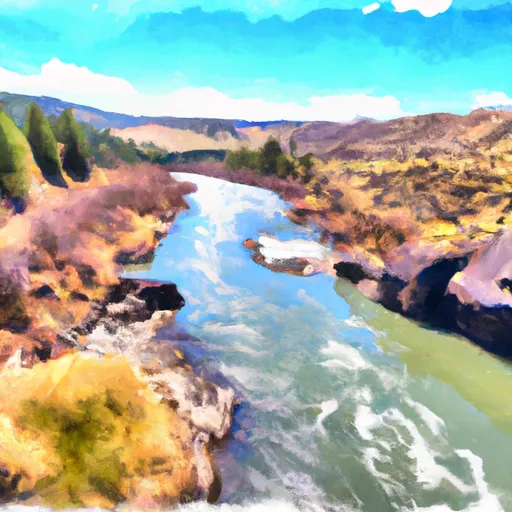Summary
Total streamflow across the
Clearwater River
was last observed at
32,109
cfs, and is expected to yield approximately
63,688
acre-ft of water today; about 212%
of normal.
River levels are high.
Average streamflow for this time of year is
15,158 cfs,
with recent peaks last observed
on
2022-06-12 when daily discharge volume was observed at
263,553 cfs.
Maximum discharge along the river is currently at the
Clearwater River At Spalding Id
reporting a streamflow rate of 12,100 cfs.
However, the streamgauge with the highest stage along the river is the
Clearwater River Nr Peck Id
with a gauge stage of 6.84 ft.
This river is monitored from 7 different streamgauging stations along the Clearwater River, the highest being situated at an altitude of 3,909 ft, the
Clearwater R Ab Trap Cr Nr T Falls.
River Details
| Last Updated | 2025-12-29 |
| Discharge Volume | 63,688 ACRE-FT |
| Streamflow |
32,109.1 cfs
-6090.4 cfs (-15.94%) |
| Percent of Normal | 211.83% |
| Maximum |
263,553.0 cfs
2022-06-12 |
| Seasonal Avg | 15,158 cfs |
River Streamflow Levels
| Streamgauge | Streamflow | Gauge Stage | 24hr Change (%) | % Normal | Minimum (cfs) | Maximum (cfs) | Air Temp | Elevation |
|---|---|---|---|---|---|---|---|---|
|
Clearwater R Ab Trap Cr Nr T Falls
USGS 14314500 |
49 cfs | 3.44 ft | 0 | |||||
|
Clearwater R Blw Mowich Creek
USGS 14314700 |
49 cfs | 4.67 ft | -3.37 | |||||
|
Clearwater River At Plummer
USGS 05078000 |
49 cfs | 3.68 ft | 24.36 | |||||
|
Clearwater River At Orofino Id
USGS 13340000 |
9260 cfs | 6.08 ft | -18.05 | |||||
|
Clearwater River At Red Lake Falls
USGS 05078500 |
98 cfs | 4.83 ft | 31.68 | |||||
|
Clearwater River Nr Peck Id
USGS 13341050 |
10700 cfs | 6.84 ft | -15.08 | |||||
|
Clearwater River At Spalding Id
USGS 13342500 |
12100 cfs | 6.01 ft | -14.79 |
Seasonal Discharge Comparison
Maximum Streamflow Discharge
Streamflow Elevation Profile
A clearwater river is classified based on its chemistry, sediments and water colour. Clearwater rivers have a low conductivity, relatively low levels of dissolved solids, typically have a neutral to slightly acidic pH and are very clear with a greenish colour. Clearwater rivers often have fast-flowing sections.The main clearwater rivers are South American and have their source in the Brazilian Plateau or the Guiana Shield. Outside South America the classification is not commonly used, but rivers with clearwater characteristics are found elsewhere.Amazonian rivers fall into three main categories: clearwater, blackwater and whitewater. This classification system was first proposed by Alfred Russel Wallace in 1853 based on water colour, but the types were more clearly defined according to chemistry and physics by Harald Sioli (de) from the 1950s to the 1980s. Although many Amazonian rivers fall clearly into one of these categories, others show a mix of characteristics and may vary depending on season and flood levels.

 Clearwater River
Clearwater River
 Clearwater River To Red And American Rivers Near Elk City
Clearwater River To Red And American Rivers Near Elk City